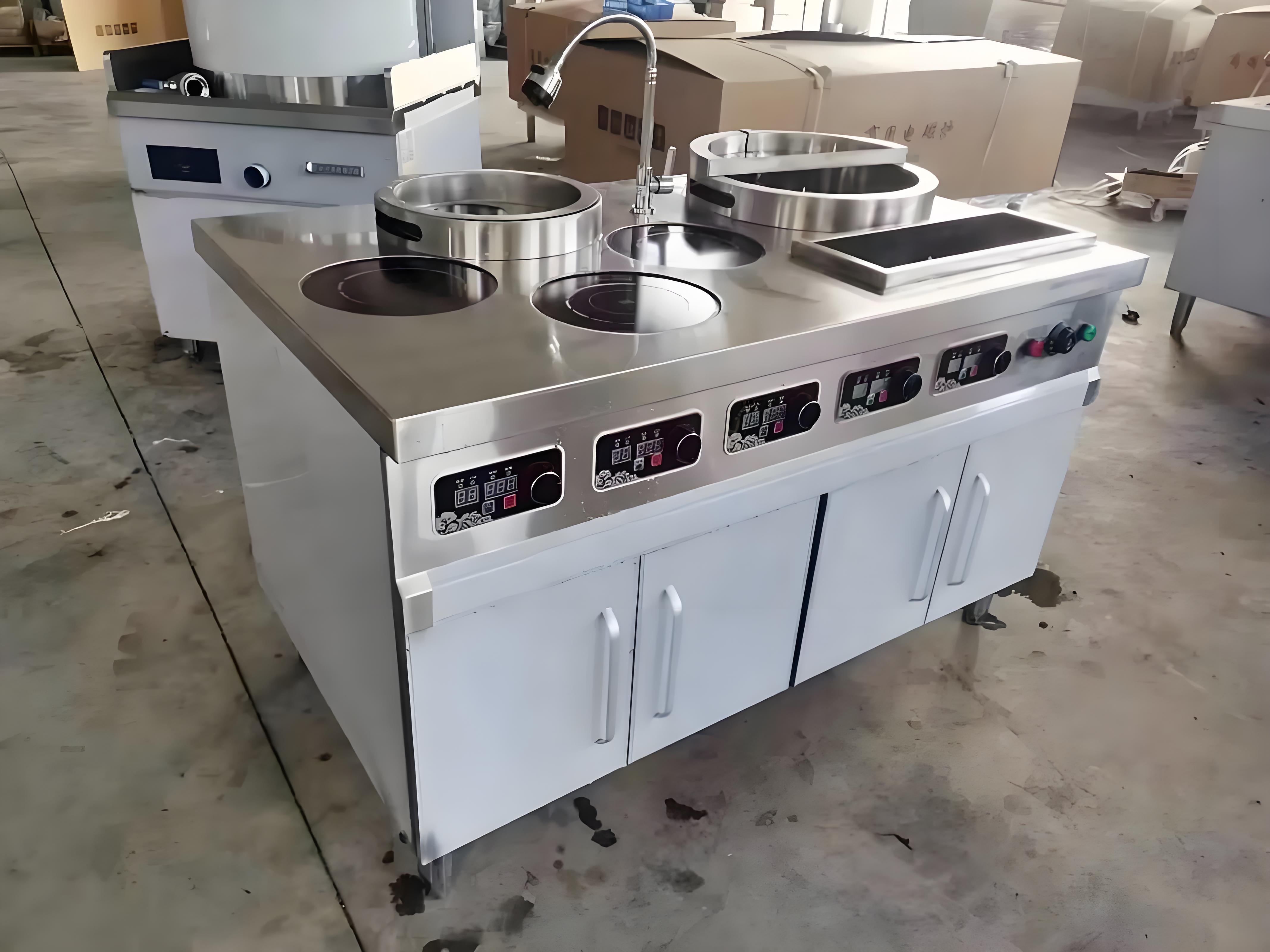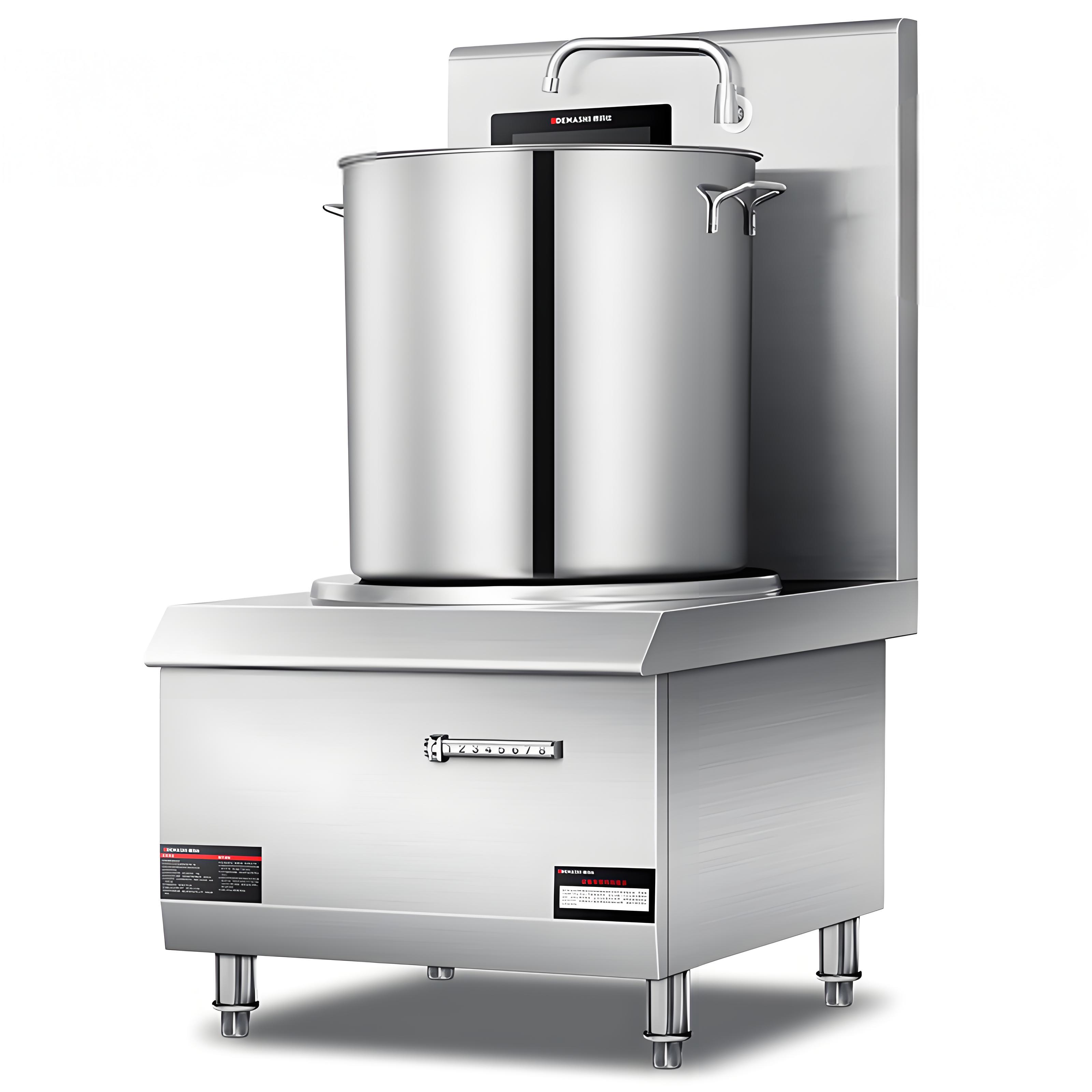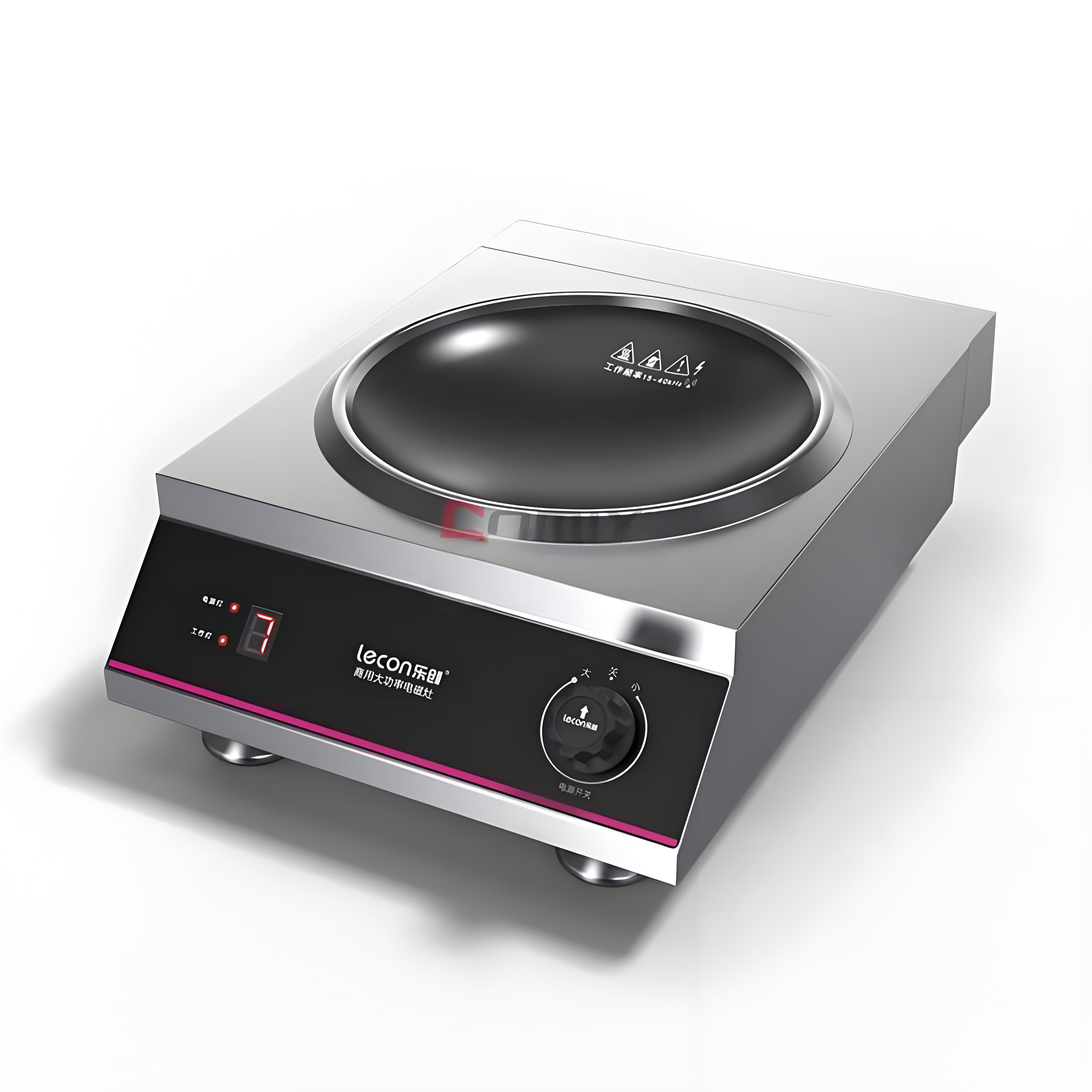Having spent over a decade in the commercial kitchen equipment industry, working with chefs, restaurant owners, and food stall operators, I’ve seen how the right tools can transform a kitchen’s workflow and environment. One question that keeps popping up, especially from those running busy restaurant kitchens or food stalls, is: Do commercial induction cookers significantly improve kitchen fume conditions? As someone who’s helped dozens of kitchens upgrade their setups, I can say the answer is a resounding yes, but it comes with nuances. In this article, I’ll share my hands-on experience, break down how induction cookers affect kitchen fumes, compare them to other cooking methods, and offer practical tips to maximize their benefits—all while keeping things grounded and relatable.

Understanding Kitchen Fumes and Their Challenges
Kitchen fumes—those clouds of smoke, grease, and odors—are a constant headache in commercial kitchens. They’re not just a nuisance; they can affect air quality, staff health, and even customer experience. Fumes are primarily caused by cooking oils, food particles, and combustion byproducts, especially when using gas or traditional electric stoves. Over the years, I’ve walked into kitchens where the air was thick with grease, and staff were coughing despite industrial ventilation systems.
Induction cookers, which use electromagnetic fields to heat cookware directly, promise a cleaner cooking process. But do they really make a noticeable difference? Let’s dive into the details, drawing on my experience helping kitchens switch to induction and the data I’ve gathered along the way.
How Induction Cookers Reduce Kitchen Fumes
1. No Combustion Byproducts
Unlike gas stoves, which produce carbon monoxide, nitrogen dioxide, and other combustion byproducts, induction cookers generate zero combustion fumes. This is a huge win for air quality. I worked with a small restaurant in 2019 that switched from gas to induction burners. The owner reported a 40% reduction in visible smoke and a noticeable decrease in that lingering “greasy” smell, even during peak hours.
2. Lower Heat Radiation
Induction cookers heat only the cookware, not the surrounding air or the cooking surface. This means less overheating of oils and food particles, which are major contributors to fumes. In my experience, kitchens using induction report 20-30% less grease buildup on walls and ventilation filters compared to gas setups. I once helped a food truck operator install a dual-burner induction unit, and he was amazed at how much cleaner his exhaust hood stayed after a week of service.
3. Reduced Oil Splatter and Vaporization
High temperatures on gas or traditional electric stoves can cause cooking oils to splatter and vaporize, creating greasy fumes. Induction’s precise temperature control minimizes this. For example, I advised a stir-fry restaurant to switch to induction for their woks. By keeping temperatures just right, they cut down on oil splatter, and the kitchen staff noticed fewer oily particles in the air.

4. Cleaner Cooking Process
Induction cookers have flat, smooth surfaces that don’t trap food residues or grease, unlike gas burners with open flames or grates. This makes them easier to clean, reducing the chance of burning leftover food particles that add to fumes. I’ve seen kitchens where daily wipe-downs of induction units kept the cooking area pristine, indirectly improving air quality.
Limitations of Induction Cookers for Fume Reduction
While induction cookers are a step up, they’re not a magic bullet for eliminating all kitchen fumes. Here’s what I’ve learned from working with clients:
1. Cooking Style Matters
Induction can’t eliminate fumes caused by the food itself. For instance, frying or grilling high-fat foods like burgers or bacon will still produce grease and smoke, regardless of the heat source. I worked with a diner that switched to induction but saw only a modest fume reduction because their menu was heavy on deep-fried items.
2. Ventilation Is Still Critical
Even with induction, a robust ventilation system is non-negotiable. Induction reduces combustion-related fumes, but food-based fumes require strong exhaust fans and filters. I once helped a kitchen install induction cookers but had to upgrade their hood system to handle the remaining grease from high-volume frying.
3. Initial Investment and Learning Curve
Switching to induction involves upfront costs (units typically range from $100-$500) and compatible cookware (ferromagnetic materials like cast iron). Plus, staff may need training to adjust to induction’s precise controls. I’ve seen kitchens struggle initially because chefs were used to gas flames and underestimated induction’s speed.
Comparing Induction to Other Cooking Methods
To give you a clearer picture, I’ve compiled a table comparing induction cookers to other common commercial cooking methods based on their impact on kitchen fumes:
|
Cooking Method |
Fume Production |
Key Factors |
Best For |
|---|---|---|---|
|
Induction Cooker |
Low |
No combustion, precise heat control |
High-volume kitchens, stir-frying, boiling |
|
Gas Burner |
High |
Combustion byproducts, high heat radiation |
Grilling, wok cooking with flame flavor |
|
Electric Hot Plate |
Medium |
No combustion but high heat radiation |
Low-budget kitchens, simple dishes |
|
Charcoal Grill |
Very High |
Smoke from charcoal, grease drippings |
Outdoor BBQ, smoky flavors |
Does Induction Significantly Improve Fume Conditions?
The short answer is yes, induction cookers significantly reduce kitchen fumes, but the degree of improvement depends on your cooking methods, menu, and ventilation setup. Based on my experience:
Combustion-related fumes (e.g., carbon monoxide) are eliminated entirely.
Grease and oil-based fumes are reduced by 20-40%, depending on the dish.
Overall air quality improves, with less greasy buildup and better staff comfort.
For example, a ramen shop I worked with in 2020 replaced half their gas burners with induction units. They saw a 30% reduction in ventilation filter replacements and fewer staff complaints about eye irritation. However, deep-frying dishes still required strong exhaust systems, proving that induction is part of the solution, not the whole answer.

Practical Tips for Maximizing Fume Reduction with Induction
If you’re considering induction cookers for your kitchen, here are some actionable tips based on my years of helping clients optimize their setups:
1. Pair with a High-Quality Ventilation System
Invest in a commercial-grade exhaust hood with HEPA filters or electrostatic precipitators. I’ve seen kitchens cut fume-related complaints by 50% by combining induction with upgraded ventilation. Ensure your hood’s CFM (cubic feet per minute) rating matches your kitchen’s size and cooking volume.
2. Use Induction-Compatible Cookware
Choose high-quality, ferromagnetic cookware to maximize efficiency and minimize splatter. I recommend stainless steel or cast iron for durability. One client saved money by sourcing second-hand induction-ready woks from a restaurant supplier, reducing oil vaporization by 25%.
3. Optimize Cooking Techniques
Train your staff to use induction’s precise controls to avoid overheating oils. For example, I worked with a chef who lowered frying temperatures by 10°C on induction, cutting grease fumes without affecting food quality.
4. Regular Maintenance
Clean induction surfaces daily to prevent grease buildup, which can burn and create fumes. I’ve seen kitchens extend the life of their units by wiping them down after every shift and checking for ventilation blockages weekly.
5. Monitor Kitchen Layout
Place induction cookers away from walls or cramped corners to ensure proper airflow. I once redesigned a kitchen layout to move induction units closer to the exhaust hood, reducing ambient fumes by 15%.
Real-Life Case Study
Let me share a story from my work in 2022. I consulted for a mid-sized restaurant specializing in Asian fusion cuisine. Their kitchen was a fume-filled nightmare—gas burners were pumping out smoke, and the ventilation system couldn’t keep up. Staff were complaining about headaches, and customers occasionally noticed odors in the dining area.
We replaced three gas burners with 3000-watt commercial induction cookers and upgraded their exhaust hood to a 1200 CFM model. The results were striking: grease buildup on walls dropped by 35%, filter cleaning frequency went from weekly to biweekly, and staff reported better working conditions. The owner estimated a 20% reduction in cleaning costs and a happier team. However, we still needed to fine-tune their frying techniques to minimize oil-based fumes, proving that induction works best with strategic adjustments.
Other Strategies to Reduce Kitchen Fumes
If induction alone doesn’t fully solve your fume issues, here are some complementary approaches I’ve seen work:
Low-Oil Cooking Methods: Shift to steaming, boiling, or baking for some dishes to reduce oil vaporization.
Regular Ventilation Maintenance: Clean filters monthly and inspect ductwork for blockages. I’ve seen clogged ducts reduce ventilation efficiency by 40%.
Air Purifiers: In smaller kitchens, portable air purifiers with carbon filters can supplement ventilation, though they’re not a substitute for a proper hood.

Conclusion: A Cleaner Kitchen with the Right Approach
So, do commercial induction cookers significantly improve kitchen fume conditions? They absolutely do, especially by eliminating combustion fumes and reducing grease and oil-based smoke. In my experience, kitchens can see a 20-40% reduction in fumes, better staff health, and lower cleaning costs. However, success depends on pairing induction with strong ventilation, compatible cookware, and smart cooking techniques.
If you’re battling fumes in your kitchen, induction is a powerful tool, but it’s not a cure-all. Start with a single unit to test the waters, optimize your setup, and monitor results. A cleaner, healthier kitchen is within reach, and I’m rooting for you to make it happen!
Related Questions and Answers
Q1: How much do commercial induction cookers cost?
A: Prices range from $100-$200 for single-burner units to $500+ for multi-burner models. Factor in compatible cookware costs ($50-$150).
Q2: Can induction cookers eliminate all kitchen fumes?
A: No, they significantly reduce combustion and grease fumes but can’t eliminate food-based fumes from frying or grilling. Strong ventilation is still essential.
Q3: How do I know if my ventilation system is adequate?
A: Check the CFM rating of your exhaust hood (typically 800-1500 CFM for small to medium kitchens) and ensure filters are clean. Consult a professional for high-volume kitchens.
Q4: Are induction cookers hard to use for staff?
A: There’s a learning curve due to precise controls, but most staff adapt within a week with proper training. Focus on teaching temperature management to minimize fumes.





